-
Posts
1,686 -
Joined
-
Last visited
-
Days Won
12
Content Type
Profiles
Forums
Events
Store
Downloads
Gallery
Posts posted by Dave R
-
-
It has the Sho stamp so is non traditional in some way. Is the Tsuba iron, it certainly looks cast.
-
Paint of cosmoline, either way it has probably preserved the blade.
-
OK, going out on a limb here, we know from Mr Komiya's research, that in times of shortage commissioned officers were allowed to buy arsenal made NCO swords. If you were such, would you not want to make it look less like one from the box, and make it clear that it was an officers property!
" In the previous month, on 29th of July, Army officers were granted the right to purchase Type 95 swords for Yen 33 from the Tokyo or Kokura Arsenals."
https://www.warrelics.eu/forum/Japanese-militaria/sos-swords-out-stock-alert-783673/
-
 1
1
-
 1
1
-
-
7 hours ago, JohnL said:
I really like the tsuba too, though doesn't it seem unlikely that someone would have a family heirloom tsuba drilled for a retention strap?
Why do you call it a family heirloom, more likely bought from a second hand shop for the job! Even now you can pick up ordinary Edo tsuba cheap from Japan. Back in the 1930's-40's they would have been junk. Below, bought for £15 in 2015..... It might even have been one of those Showa retro jobs. I have even seen them on Shin Gunto drilled for the Chuso.
-
 1
1
-
-
Bill does turn up some amazing stuff. I have had a few things off him in the way of blades and fittings over the years.
-
On 4/3/2022 at 8:59 AM, robinalexander said:
Dave,
Have attached a pic each of the four 'sides' of nakago and I dont think there has been any brazen braising going on here.
Good thought though. I would rather know about something like that than thinking I had something that really, wasn't!
The one I saw was very "brazen", and used the habaki to hide the join, which is why I always advise to remove the habaki, however stuck it might be.
-
 1
1
-
-
More photo's needed of the complete blade with some detail shots.... But if that is the original condition of the tang, then it is a WW2 era blade. What's on the other side?
-
 1
1
-
-
I am going to stick my neck out here. I think the sword is a genuine late war Shin Gunto hilt, married to a blade and scabbard of a post war souvenir made by the Tenshozan factory. Give it a shake, it will probably rattle, and as such the value is of a WW2 themed curio.
-
 1
1
-
-
-
This has always put me off "Buyee", so I rather boringly stick with dealers I know on Ebay.
-
 1
1
-
-
Since leaving the EU all our border forces have been overwhelmed by work, so sadly we can expect a lot of problems. The combination of a major change in relations with our trading partners, and the laziest government since the 18th century has not been a good one.
-
 1
1
-
-
It's more likely to be gold foiled over copper, in keeping with Japanese tradition and aesthetics. If it was solid gold you can be bloody sure the vendor would have mad a BIG point of it!
-
 2
2
-
-
Do you still have the wooden core of the hilt? Sadly robbing good parts from a so-so blade was quite common back in the day.
There are two paths you can follow here, haunt ebay for a decent Tsuka and risk it not fitting... which I have done a few times with very hit and miss results. Only once have I had a good fit via this method.
Having bought from ebay, disassemble the tsuka and recut it to fit your blade, though you will have to rebind it which is not easy but is doable. In WW2 this was the job of schoolgirls, so it's not rocket science. I have had more success with this method, and done it about four or five times.
-
 1
1
-
-
22 hours ago, lonely panet said:
this topic is like whom has Goerrings missing GrandCross. ??
At least five different collectors, non of whom talk to each other......
-
 2
2
-
-
If you have ever worn a sword for any length of time (reenactor here) they lose a lot of their charm as a fashion accessory. The metal scabbard weighs more than the sword. Any sensible officer going to war would happily swap out the metal scabbard for a wood and leather one. British officers from the 1820's were buying their swords with both scabbards, wood and leather field and metal parade and the boxes and bags they came in were fitted out for both. A bit different in Japan, but I find nothing odd about a sword fitted out for war with a wooden scabbard, but having the potential for a metal parade scabbard when needed.
-
 3
3
-
-
9 minutes ago, Ooitame said:
@Bruce Pennington third picture down the clasp, the part that would latch to the tsuba, comes from a hole in the koshirae.
Thanks for the knowledge on type 98 ana.
If you mean this, it's just missing the mouth piece that would conceal this.
-
 1
1
-
-
It looks low end but genuine to me. Blade made out of bar stock, cheap fittings, and late war. A readable date is a point in its favour, Chinese inscriptions are usually nonsense.
Officers bought these out of their own money, and the official set price was 80 jpy which went nowhere in 1944.
-
 2
2
-
-
In the above case, I wonder if this was a busy no nonsense mans version of the piquet weight sword.
-
-
Thank you for posting these, it does my heart good to see that bargains are still to be found.
-
 1
1
-
-
Souvenir swords were being made even as the war was still ongoing.
-
I would call the top one out as being a mix of fake and original parts, as we have seen so often before. The tang and the wrap are all wrong, and the seppa look to have been crudely altered to fit.
The Rinji looks OK, but better photos needed. The wrap is an amateur job and the proportions are odd. I would not buy either from these photos.
-
 1
1
-
-
Something I found interesting some time ago.
In the 17th century the Dutch traders were in no doubt about the quality of Japanese blades and one comment was that they cut up a western blade as though it were a flag (a type of reed). They also bought, and traded or gave as gifts some of these blades to customers in the West!
During the Crimean War the Royal Navy sent an expedition to the Eastern end of the Russian Empire, and they used some Japanese ports as bases for resupply, there is an interesting account of this (Notes on the late expedition against the Russian settlements) . Again mention is made of the quality of Japanese blades, and unsuccessful efforts made to buy them. There is an anecdote in this about some good natured swordplay on one of the ships with a samurai, and the samurai's blade came off the worst! The writer comments that he would have liked to know if this was a particularly poor nihonto, or a particularly good naval sword. He does mention that the Western blade was an officers sword made by Wilkinson .
Japanese blades were made as they always had been, Western blades had moved on quite considerably!
-
 3
3
-
-
You might get more relevant feedback here.... Ethnographic Arms & Armour - Ethnographic Weapons
-
 2
2
-



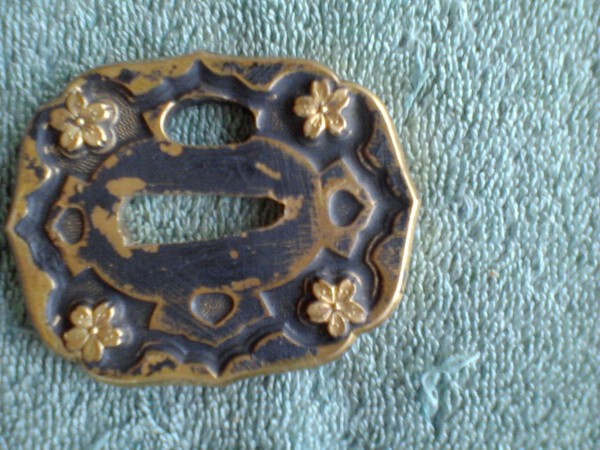
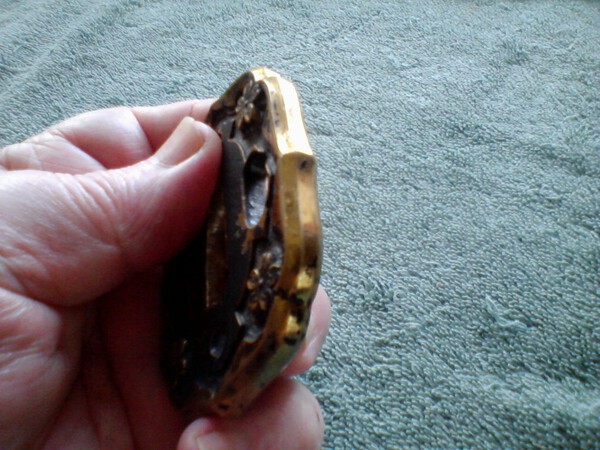
![P12-09-20_12.58[1].jpg](https://www.militaria.co.za/nmb/uploads/monthly_2022_08/296833865_P12-09-20_12_581.thumb.jpg.06a829e39adc93408533e4bc0b2b22ca.jpg)
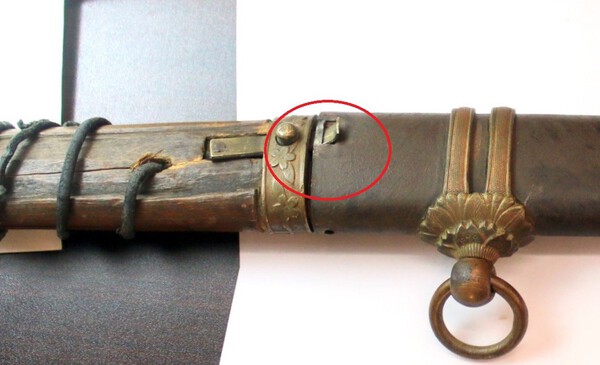

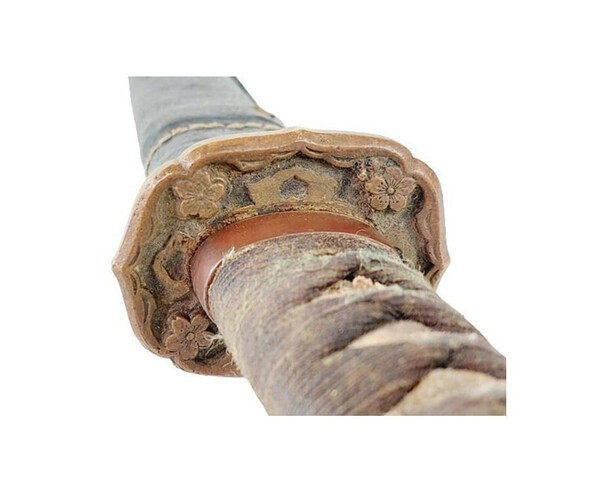
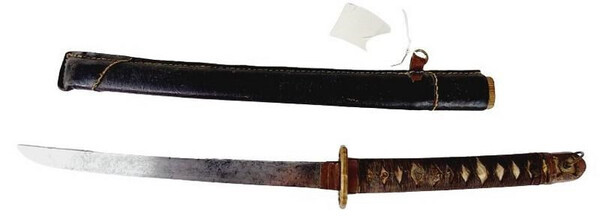
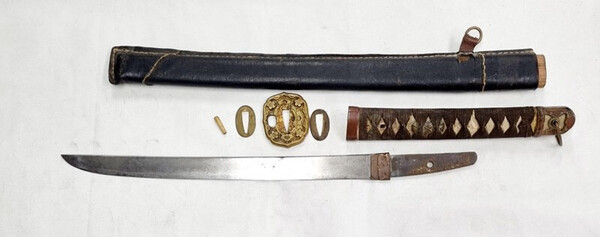
Iron civilian gunto tsuba
in Military Swords of Japan
Posted
A lot of, in fact most, old tsuba have that hole, but it's for the kodzuka not a leather strap!